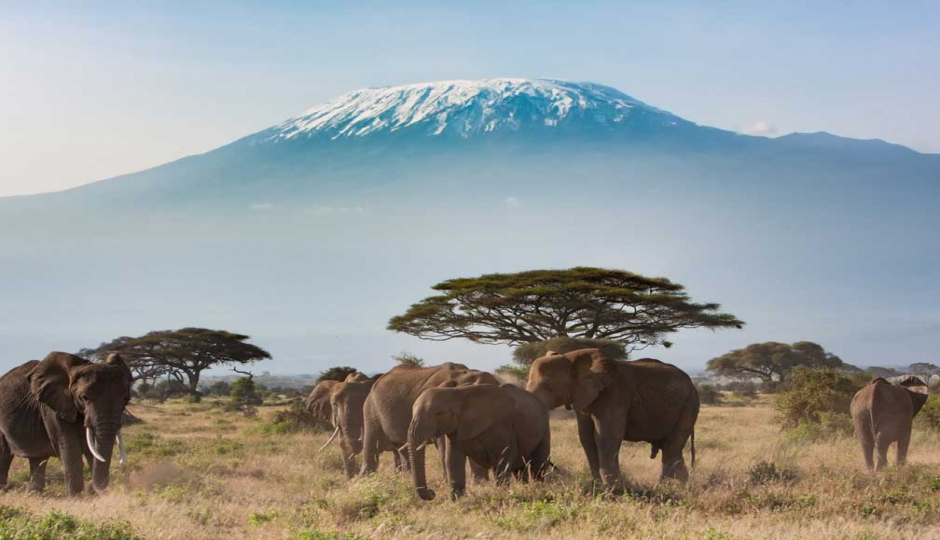
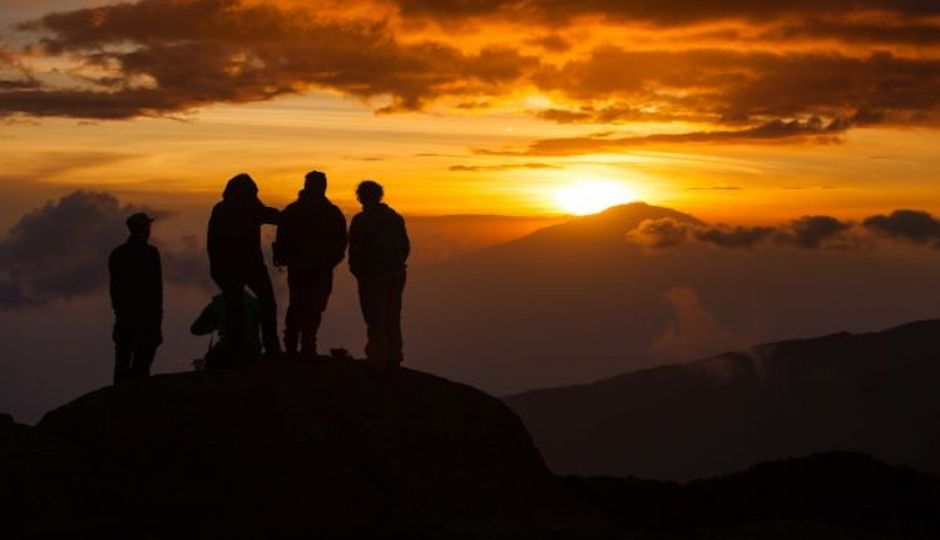
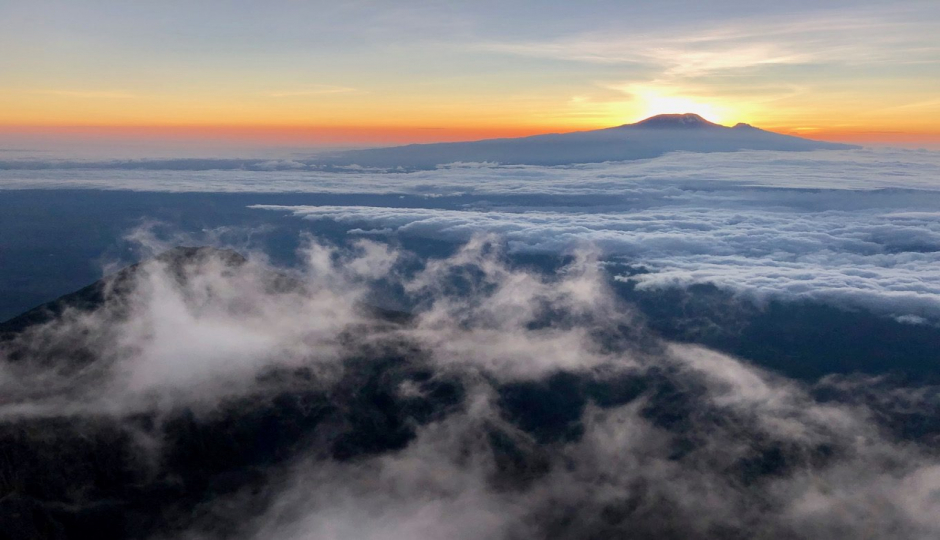
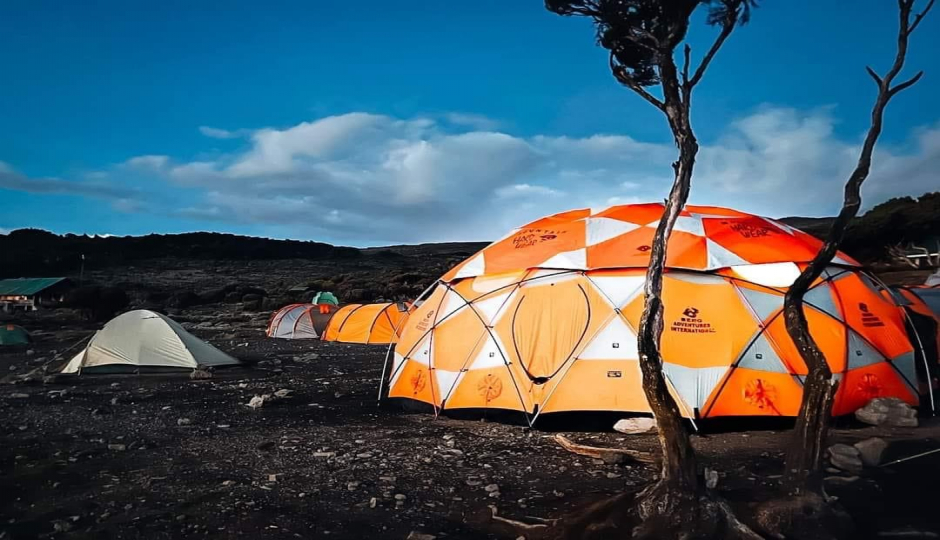




Where is Mt Kilimanjaro Located?
Mt. Kilimanjaro is located in Tanzania, on the eastern border with Kenya. It is Africa's highest and most prominent mountain peak and stands at an incredible 5,895m (19,341 ft) tall. The best time to climb Kilimanjaro is typically in June-October when the weather conditions are generally favorable for summit attempts. While there may be some challenges along the way such as high altitude or bad weather, it remains one of the best mountaineering experiences anyone could wish for!
How Tall Is Mount Kilimanjaro?
Kilimanjaro is a very impressive mountain - standing at just under 6,000 meters tall. It provides an incredible view and has become a popular tourist destination. However, climbing Kilimanjaro is not for the faint of heart as it can be quite strenuous to climb some sections of the mountain. You need to have relatively good physical condition in order to reach the peak and people over 65 years old are usually not allowed on certain routes due to safety hazards. Although you don't necessarily need mountaineering skills or equipment, having someone with experience act as your guide might make ascending easier and more enjoyable overall.
Can A Normal Person Climb Kilimanjaro?
Can a normal person climb Kilimanjaro? The answer is yes, absolutely. Mount Kilimanjaro is an iconic attraction in Tanzania and many people from around the world come to conquer its summit each year. Before attempting the challenge, however, there are stages you must go through to prepare adequately for the ascent. Firstly you need to get into good physical shape with regular exercise; some activities such as rock climbing can be beneficial too if available near your home area before departure. Additionally, it's important to bring enough food and drinking water during your hike, plenty of layers when temperatures drop at night, and even UV protection gear or sunglasses on sunny days!
Do you need a guide to climb Mt. Kilimanjaro?
If you're planning a climb up Mt. Kilimanjaro, then the best thing to do is get yourself a professional mountain guide. Lindo Travel's Guides are experienced and dedicated with plenty of food and equipment ready for your climb. A skilled mountain guide can provide invaluable guidance throughout the course of your ascent which will help ensure that you stay safe all while enjoying one of the world's most iconic mountains. The guides will also know how to deal with any emergencies or issues should they arise on your journey so it’s well worth investing in a good quality guide if you want to have an enjoyable experience on this vast mountaintop!
How Long Does It Take To Climb Mount Kilimanjaro?
Climbing Mount Kilimanjaro is a once-in-a-lifetime experience, so it's important to know how long the trip will take. There are several different routes that can be taken; two of the most popular are the shorter Marangu Route and the longer Lemosho Route. The Machame route has become one of the most recommended paths to take due to its wide range of trails and good success rate in summiting, but this usually takes up to 7 days. If you would like a faster climb there is always the option for Marangu or Machame Routes where with enough determination minimum of 6 days could be done.
The length of the climb will depend on which route you choose. Lemosho Route takes longer and it can typically take between 8 to 9 days while Marangu Route, also known as Coca-Cola or Tourist Route takes about 6 days for those who are physically fit enough to make the arduous journey. For most climbers, the best option would be Machame Route which can usually be done in 7 days but there's a possibility to do it in minimum 6 days if weather and other conditions allow for it.
How Much Does It Cost To Climb Kilimanjaro?
Climbing Kilimanjaro is a dream adventure for many, but how much does it cost? Generally speaking, the total cost of climbing Kilimanjaro will depend on multiple factors like park fees, accommodation costs, and salary paid to porters and guides. Additionally, you should also bear in mind the cost of round transports, tents materials for camping along with food supplies needed as well as other equipment which can potentially increase your budget significantly. It is essential to research before committing so that you have an accurate idea about just how much money you need to climb Kilimanjaro.
Depending on what type of package you purchase this can range from $1,680 to up to $3,000 or more as some companies now offer luxury packages. It's important to factor in all costs when calculating how much a climb will cost - not just trekking itself but also any transportation needed to get there or back home afterward.
When Is The Best Time To Climb Kilimanjaro?
Mount Kilimanjaro is a popular destination for hikers and climbers from around the world. If you plan on summiting, it's important to know when the best time to climb is so you can properly prepare. Generally speaking, most people choose to attempt Mount Kilimanjaro between January and March or June through October as these are considered to be the driest months. Specifically, if you can arrange your trip in late December/early January or mid-June through early July this will give you a higher chance of success due to optimal weather conditions. These times also provide increased clarity with minimal wind which makes climbing easier. Do some research prior to booking your tickets in order to make sure that they coincide with these ideal times!
What Are The Best Routes Up Kilimanjaro?
Deciding the best route up Mt Kilimanjaro is a tricky proposition as all routes require fitness, proper equipment, and mental determination. Of the six main routes that are popular with climbers, Machame (also known as Whiskey Route), Lemosho, Rongai, Shira Plateau, Northern Circuit / Umbwe, and Marangu (the “Coca-Cola” route) are considered to be among the most popular options. The route you take will depend on your interests; for instance, if you enjoy more wildlife sightings then the Lemosho or Rongai might work well for you. If acclimatizing quickly tops your list of priorities then taking Marangu might be ideal as it offers higher altitude camps - but can also get busy due to its popularity
While there are several routes you could take, the two most popular include Machame Route and Marangu Route. The Machame route is considered by many to be the best because it offers beautiful scenery and provides an opportunity to acclimatize better than other options with detours in some places such as Lava Tower or Crater Camp. This makes it an excellent choice if you have enough time and want to enjoy amazing views along your climb that will last forever in your memory. When compared to other ways of joining this magnificent landmark, climbing up from its hiking trails is definitely one of the best routes out there!
Which Is The Shortest Route Up Kilimanjaro?
Deciding which is the shortest route up Mount Kilimanjaro depends on what your goal is. Generally, the most direct and popular routes are Marangu Route and Machame Route. The Marangu route takes around 5 to 7 days with an easier gradient for hiking although it has a higher failure rate due to altitude sickness compared to other routes such as Rongai or Lemosho. On the other hand, the Machame route can take anywhere from 6-8 days depending on the starting point but offers more variation in the terrain along with stunning views of Mt. Meru and Mawenzi Peaks during the trekking period making this one of the hardest yet beautiful routes amongst all available options on Kilimanjaro.
What Is Altitude Sickness?
Altitude sickness, also known as Acute Mountain Sickness (AMS), is a medical condition caused by going to high altitudes too quickly. As you go higher in elevation the air pressure decreases and you experience less oxygen available for breathing. This can cause symptoms of altitude illness such as headache, fatigue, nausea, difficulty sleeping, loss of appetite, and decreased coordination. In severe cases, people may even experience confusion or unconsciousness due to anoxia or hypoxia. It's important to recognize early signs of AMS so it can be treated appropriately - usually by descending to lower altitudes if possible
How do you train to climb Kilimanjaro?
Climbing Mount Kilimanjaro is no easy task and requires training to ensure that not only will you be able to make it up the mountain, but also have a safe return. But what kind of training do you need? The most important preparation for climbing this majestic peak involves both strength and endurance workouts such as running or cycling, as well as aerobic exercises like walking uphill with a weighted pack on your back. Additionally, focusing on good nutrition habits prior to prepping can help increase energy levels before embarking on the climb. It's highly recommended that climbers acclimatize themselves by spending time in areas of high altitude prior to attempting Kilimanjaro in order to maximize their chances of success upon reaching the summit.
It’s important to focus on building your endurance and muscular strength over several months in order to ensure that the trip isn't too strenuous upon arrival. For aerobic exercise, consider running, cycling, or swimming regularly. Additionally, strength exercises like push-ups and pull-ups should be done at least two times per week leading up to the climb as well as leg workouts with weights or other resistance bands multiple times per week. Having an adequate nutrition plan can make the biggest difference - Carbohydrates are key because they provide much of our energy while climbing so it's important plenty of complex carbohydrates like potatoes and whole grains are consumed before and during summit day climbs. Finally, use a stress reliever every now and then such as yoga which will help keep your body prepared both mentally and physiologically.
What Should I Pack For Kilimanjaro?
When embarking on a Kilimanjaro hike, it’s important to make sure that you bring the proper items for an enjoyable experience. A comprehensive packing list includes long- and short-sleeved shirts; a warm jacket; comfortable hiking shoes with good traction, as well as extra socks and insoles; rain protection (hooded parka or poncho); headgear like hats or beanies; sunscreen to protect from both UV rays during the day & cold air in high altitudes at night; energy drinks/bars/trail mix snacks; your water bottles should be 1-2 liters maximum to avoid adding weight on altitude hikes beyond 10k ft+ when traveling with rovers specialized gear like backpacks of 50L+, tent poles, etc is recommended per individual. Also, don't forget those emergency kits – first aid kit canteens, knives, etc might become handy while out there!
Tipping on Mount Kilimanjaro
Tipping your guides and porters on the Kilimanjaro climbing is one of the most important aspects to consider when planning a successful summit attempt. Generally speaking, you should tip based on how well they did their job and what kind of service they provided throughout the trek. As a general rule, it’s recommended to think about tipping around 10-15% of the total cost for each person (including guides and porters), split between all team members equally. Ultimately though, if your climbers were able to reach new heights with these individuals by their side through tough circumstances then surely tipping them an appropriate amount would justly reward them!
What Should I Do After Climbing Kilimanjaro?
After completing the thrilling adventure of climbing Kilimanjaro, why not further explore and indulge yourself in all that Tanzania offers? You can go on a Safari to marvel at wild animals in their natural habitat, visit homeless people or orphanages and help out as much as you can with any volunteering opportunities. Furthermore, the Zanzibar Archipelago consists of numerous gorgeous coral reefs teeming with brightly colored fish - an ideal getaway for some beach fun! With so many options available, you’ll never run out of activities after conquering Kilimanjaro.
Ready to Go?
Are you ready to reach the summit of Kilimanjaro? We are! Lindo Travel & Tours is here to make sure your dream comes true. Not only will we provide all the necessary equipment and information for a successful trek, but also have an experienced and knowledgeable team that can help guide you every step of the way. So come join us on this adventure — let's climb together towards Kilimanjaro's peak with excitement and anticipation!




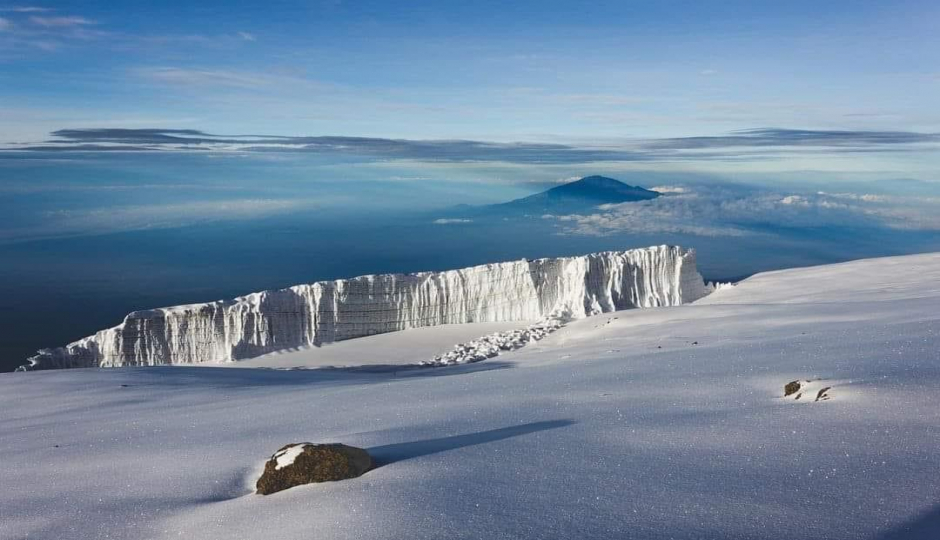
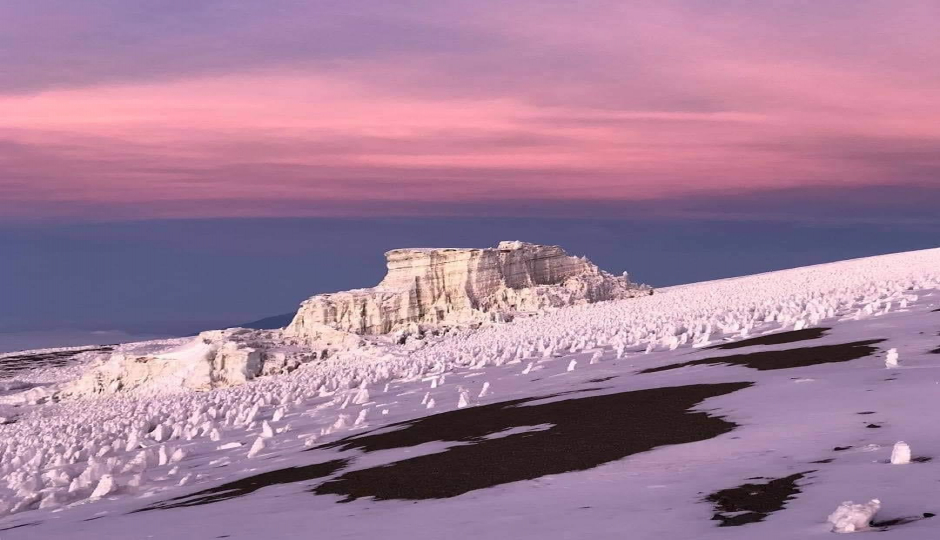
What is a Reasonable Tanzania Safari Itinerary?
How Do I Plan a Kilimanjaro Climb?
To book your adventure, simply send us an email detailing your desired experience—whether it's climbing Mount Kilimanjaro, going on a Tanzania safari, or enjoying the Zanzibar beach.
We'll promptly respond with all the information you need to finalize your plans. Plus, we offer the convenience of online payment to make the process even smoother.
View Packages